
Chilomastix mesnili
[Chilomastix mesnili]
Causal Agents
Chilomastix mesnili, a nonpathogenic flagellate.
Life Cycle

The cyst stage is resistant to environmental pressures and is responsible for transmission of Chilomastix. Both cysts and trophozoites can be found in the feces (diagnostic stages)  . Infection occurs by the ingestion of cysts in contaminated water, food, or by the fecal-oral route (hands or fomites)
. Infection occurs by the ingestion of cysts in contaminated water, food, or by the fecal-oral route (hands or fomites)  . In the large (and possibly small) intestine, excystation releases trophozoites. Chilomastix resides in the cecum and/or colon; it is generally considered a commensal whose contribution to pathogenesis is uncertain. Animals may serve as a reservoir for Chilomastix.
. In the large (and possibly small) intestine, excystation releases trophozoites. Chilomastix resides in the cecum and/or colon; it is generally considered a commensal whose contribution to pathogenesis is uncertain. Animals may serve as a reservoir for Chilomastix.
Geographic Distribution
Worldwide.
Clinical Presentation
Chilomastix mesnili is considered nonpathogenic. The presence of cysts and/or trophozoites in stool specimens can however be an indicator of fecal contamination of a food or water source, and thus does not rule-out other parasitic infections.
Chilomastix mesnili trophozoites, trichrome stain.

Figure A: Trophozoite of C. mesnili from a stool specimen, stained with trichrome. Image taken at 1000x magnification.
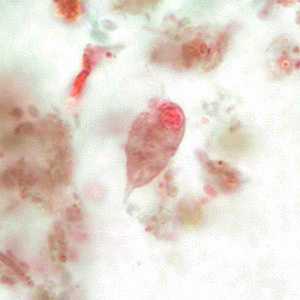
Figure B: Trophozoite of C. mesnili from a stool specimen, stained with trichrome. Image taken at 1000x magnification.
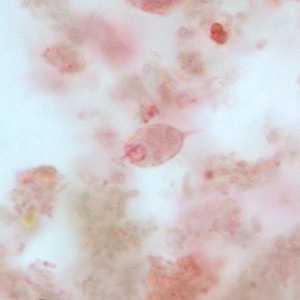
Figure C: Trophozoite of C. mesnili from a stool specimen, stained with trichrome. Image taken at 1000x magnification.

Figure D: Trophozoite of C. mesnili from a stool specimen, stained with trichrome. Image taken at 1000x magnification.
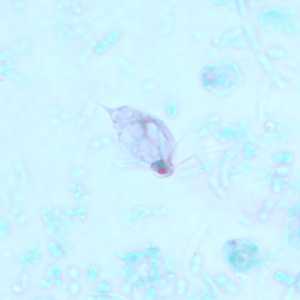
Figure E: Trophozoite of C. mesnili from a stool specimen, stained with trichrome. Image taken at 1000x magnification.

Figure F: Trophozoite of C. mesnili from a stool specimen, stained with trichrome. Image taken at 1000x magnification.
Chilomastix mesnili cysts, trichrome stain.
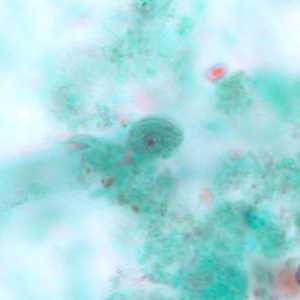
Figure A: Cyst of C. mesnili in a stool specimen, stained with trichrome. Image taken at 1000x magnification.
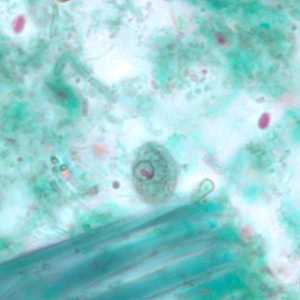
Figure B: Cyst of C. mesnili in a stool specimen, stained with trichrome. Image taken at 1000x magnification.

Figure C: Cyst of C. mesnili in a stool specimen, stained with trichrome. Image taken at 1000x magnification.

Figure D: Cyst of C. mesnili in a stool specimen, stained with trichrome. Image taken at 1000x magnification.
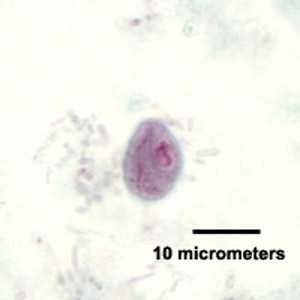
Figure E: Cyst of C. mesnili in a stool specimen, stained with trichrome. Image taken at 1000x magnification.
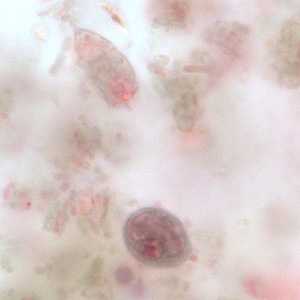
Figure F: Cyst (lower) and trophozoite (upper) of C. mesnili in a stool specimen, stained with trichrome. Image taken at 1000x magnification.
Chilomastix mesnili cysts in wet mounts.

Figure A: Cyst of /em>C. mesnili in a concentrated wet mount of stool, stained with iodine. Image taken at 1000x magnification.
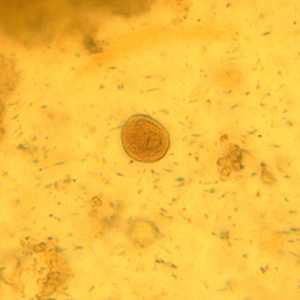
Figure B: Cyst of C. mesnili in a concentrated wet mount of stool, stained with iodine. Image taken at 1000x magnification.
Laboratory Diagnosis
Chilomastix mesnili is identified through the detection of cysts and/or trophozoites in stool specimens, both concentrated wet mounts and permanent stained smears (e.g., trichrome).
Morphology
More on: Morphologic comparison with other intestinal parasites.
Treatment Information
As this species is considered nonpathogenic, there are no treatment recommendations for this organism.
DPDx is an education resource designed for health professionals and laboratory scientists. For an overview including prevention and control visit www.cdc.gov/parasites/.
- Page last reviewed: May 3, 2016
- Page last updated: May 3, 2016
- Content source:
- Global Health – Division of Parasitic Diseases and Malaria
- Notice: Linking to a non-federal site does not constitute an endorsement by HHS, CDC or any of its employees of the sponsors or the information and products presented on the site.
- Maintained By:


 ShareCompartir
ShareCompartir